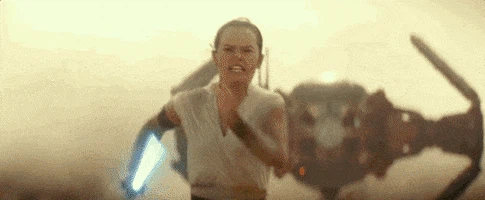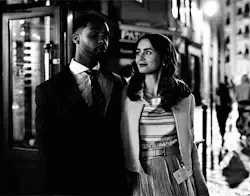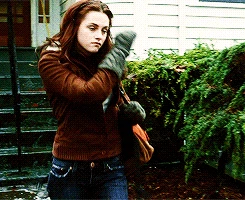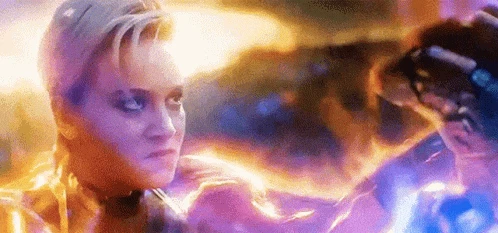The Rise Of The Mary Sue (And Why We Can't Seem To Get Rid Of Her)
If you’ve watched any popular movies or TV shows lately, you’ve probably had a “Mary Sue” grace your screen. The Mary Sue character trope is widely panned by audiences and critics alike, yet writers in Hollywood and beyond can’t seem to kick the habit.

While there’s no universally agreed upon definition of a Mary Sue, she’s generally seen as a female character without any significant flaws, who experiences no personal or emotional development over the course of a story. The circumstances around Mary Sue might change drastically as she encounters exciting plot points, but most of those problems are fairly easily overcome, at no personal cost to Mary Sue. What does not change is Mary Sue herself.
Mary Sue is typically beautiful to the point where multiple other characters in the story fall head-over-heels in love with her, even though there’s nothing innately interesting about her. Mary Sue’s story begins with the premise that she’s amazing without any explanation or evidence given as to why. Audiences often have a hard time truly connecting with a Mary Sue because, although she might look great and do amazing things, she’s fundamentally empty inside.
Mary Sues You’ve Heard Of
Rey from the newest Star Wars trilogy is perhaps the most glaring and recent example of a Mary Sue. When we first meet Rey, she has no training in anything Jedi-related, yet she’s amazing at everything she does right off the bat. Rey is able to expertly fly the Millenium Falcon, master the Force, and engage in intense lightsaber combat without any real training.

While all great stories revolve around conflict, what audiences connect with is the character’s emotional struggle and growth as they navigate said conflicts. If a character isn’t changing and being forced to sacrifice throughout the course of their story, then they fall flat.
Rey is far from the only Mary Sue to come out of Hollywood lately. There’s also Emily from Emily in Paris. Emily creates incredible and instantly viral social media posts with zero effort, while all the men in Paris fall over themselves in an effort to win her affection.

Twilight’s Bella Swan, whose only real fault is clumsiness, which both Edward and Jacob find incredibly endearing, is another modern Mary Sue.

With all of these Mary Sues cropping up over the last few years, it might seem like the trope is a fairly recent development, but Mary Sue actually traces her roots back to 1973.
Mary Sue’s Origins
Mary Sue originated in the world of fanfiction. Back in 1973, authors Paula Smith and Sharon Ferraro were running a Star Trek fan magazine when they noticed a common trope popping up in almost all of the submissions. Story after story involved a placeholder female character who was so beautiful and instantly amazing at everything that the other characters would fawn over her.
Smith understood exactly why this was happening: fanfiction is often a “placeholder fantasy” where authors are more focused on living in the world they love rather than creating a perfect character. Since she’s an author herself, Smith decided to pen a tongue-in-cheek fanfiction of her own to poke fun at the trope.
Here’s an excerpt from A Trekkie’s Tale: "Gee, golly, gosh, gloriosky," thought Mary Sue as she stepped on the bridge of the Enterprise. "Here I am, the youngest lieutenant in the fleet – only fifteen and a half years old." Captain Kirk came up to her. "Oh, Lieutenant, I love you madly. Will you come to bed with me?"
And thus, Mary Sue was born – in all her hollow glory. It’s hard to believe that Mary Sue is almost 50 years old now. The trope is well-known at this point, especially in the action/adventure genre. Everyone seems to agree that Mary Sue characters are severely lacking in originality and charisma, which begs the question: Why on earth do these Mary Sues keep getting written?
Why Can’t We Get Rid of Mary Sue?
Sadly, it looks like Mary Sue isn’t going away anytime soon. If anything, the trope actually seems to be gaining in popularity nowadays. That’s due in part to the fact that the rise of streaming services has resulted in film studios prioritizing quantity over quality, which leads to lazy and risk-averse writing. Humans are complex and emotional creatures, so it’s difficult to write a convincing character that audiences can truly connect with. It’s much easier for a writer to invent exciting plot points than it is to create rich and believable character growth, especially when it comes to female characters. That’s not to say that male Mary Sues don’t exist, because they do.
Typically referred to as “Marty Stu” or “Gary Stu,” these male characters are also incredibly attractive and good at everything. Some argue that James Bond is actually a Marty Stu, which makes sense if you think about it – he has seemingly limitless skills, the ladies fall all over him, and he always makes it out of those heart-pounding climactic fight sequences relatively unscathed. Male Mary Sues exist, but the trope is still far more commonplace in female characters.

Even when a Marty Stu does crop up in popular movies and TV shows, audiences don’t seem to mind so much. James Bond might be a Marty Stu, but he’s still a beloved and even archetypal character, whereas you’ll find scores of message boards and articles lambasting Rey and Bella Swan for their Stu-ness. Is that because society is viciously sexist? I think the reason is more complex than that, but it begins with an assumption that’s bizarrely contentious nowadays: men and women are different.
Audiences aren’t overly bothered by handsome male action heroes who leap from buildings but don’t have a lot going on internally, yet female characters of the same type stand out to us. Perhaps this is because women are more emotionally complex than men and have more diverse emotional needs. Female Lotharios don’t fall flat with audiences because society is sexist, but because, on a fundamental level, we all know that women have more to lose during sexual encounters than men do, both emotionally and physically. This makes it more difficult for women to engage in casual sex, so when we see a female character sleep with multiple men and suffer zero consequences (such as heartbreak or pregnancy), that character is unrealistic to us.
Here’s another basic truth that all audiences understand, even if they won’t admit it: Women are not as physically strong as men. Seeing a woman best a man twice her size in a fight scene (although it might be entertaining) hinders our suspension of disbelief. We simply don’t buy it, but if we are going to believe that a woman who weighs one hundred pounds soaking wet can take down Andre the Giant, then that woman better have something interesting to say, which Mary Sue rarely does. Modern pop-culture can keep trying to convince us that women and men are exactly the same, but we all inherently know this isn’t true, and Mary Sue is a partial byproduct of that incongruity.

Closing Thoughts
While Mary Sues are pervasive in television and film today, it’s still very possible to create a female character who is not a Mary Sue. For examples, look to women like Sarah Connor from Terminator or Daenerys Targaryen from Game of Thrones. Even Jane Austen knew how to steer clear of Mary Sues. Convincing female characters are emotionally complex, they make mistakes, and they embrace their femininity, even if they’re fighting futuristic robots. After all, at the end of the day, Sarah Connor was just a mother trying to protect her kid.
Love Evie? Let us know what you love and what else you want to see from us in the official Evie reader survey.